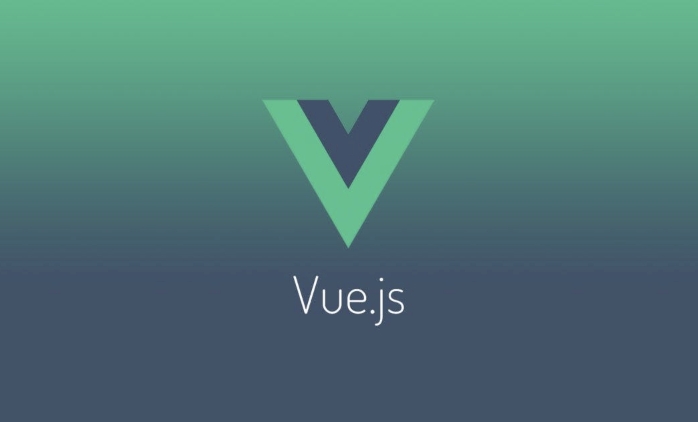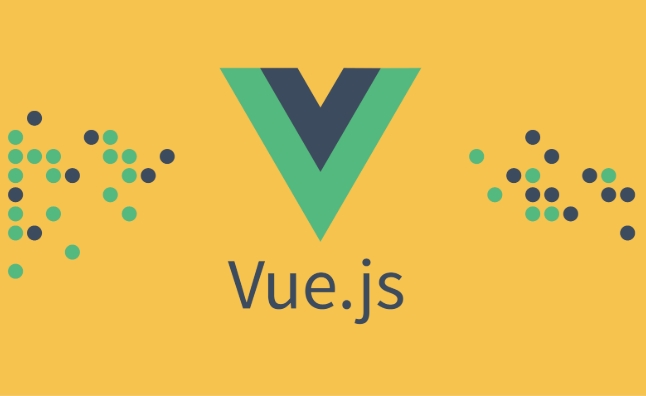How to use props to pass data to child components in Vue
Aug 02, 2025 am 05:00 AMDefine props in child components, which can be declared and verified using array or object syntax; 2. Pass data to child components through v-bind or its abbreviation in parent components; 3. Support passing various data types such as strings, numbers, boolean values, arrays and objects; 4. Abide by the props read-only principle, do not directly modify props in child components, but handle them through local data or computed attributes; 5. Use kebab-case to pass props in templates, even if camelCase is used when defining; 6. Always verify the types and necessity of props of reusable components to improve robustness. Using props correctly can ensure predictability and maintainability of communication between components.

In Vue.js, props are the primary way to pass data from a parent component to a child component. They allow you to create reusable and modular components by making them dynamic and data-driven. Here's how to use props effectively.

1. Define Props in the Child Component
First, declare the props you expect to receive in the child component. You can do this using the props option in the component definition.
<!-- ChildComponent.vue -->
<template>
<div>
<p>Name: {{ name }}</p>
<p>Age: {{ age }}</p>
</div>
</template>
<script>
export default {
props: ['name', 'age']
}
</script>Alternatively, use object syntax for better type checking and validation:

export default {
props: {
name: {
type: String,
required: true
},
age: {
type: Number,
default: 18,
validator: (value) => value >= 0
}
}
} This ensures name is a required string, and age is an optional number with a default value.
2. Pass Data from the Parent Component
In the parent component, use v-bind (or the shorthand : ) to pass data to the child's props.

<!-- ParentComponent.vue -->
<template>
<div>
<ChildComponent :name="userName" :age="userAge" />
</div>
</template>
<script>
import ChildComponent from './ChildComponent.vue'
export default {
components: {
ChildComponent
},
data() {
return {
userName: 'Alice',
userAge: 25
}
}
}
</script>You can also pass static values:
<ChildComponent name="Bob" :age="30" />
Note: Static values are passed as strings unless bound with : .
3. Handling Different Data Types
Vue supports passing various data types via props:
- Strings :
<ChildComponent name="John" /> - Numbers :
<ChildComponent :age="25" /> - Booleans :
<ChildComponent :isActive="true" /> - Arrays :
<ChildComponent :hobbies="['reading', 'coding']" /> - Objects :
<ChildComponent :user="{ name: 'John', age: 30 }" />
For complex data, it's best to pass them from the parent's data or computed properties.
4. Important Rules and Best Practices
Props are read-only in the child component. Never mutate a prop directly. If you need to modify it, use a local data property or a computed property.
? Don't do this:
this.name = 'New Name' // Warning: Avoid mutating prop
? Instead, use:
data() { return { localName: this.name } }Use kebab-case when passing props in templates (even if defined in camelCase):
<ChildComponent user-name="Alice" />
This is because HTML attributes are case-insensitive.
Always validate props when building reusable components to catch errors early.
Using props properly make your components predictable and easier to debug. They form the foundation of parent-child communication in Vue. Basically, define them in the child, pass them from the parent, and never change them directly in the child.
The above is the detailed content of How to use props to pass data to child components in Vue. For more information, please follow other related articles on the PHP Chinese website!

Hot AI Tools

Undress AI Tool
Undress images for free

Undresser.AI Undress
AI-powered app for creating realistic nude photos

AI Clothes Remover
Online AI tool for removing clothes from photos.

Clothoff.io
AI clothes remover

Video Face Swap
Swap faces in any video effortlessly with our completely free AI face swap tool!

Hot Article

Hot Tools

Notepad++7.3.1
Easy-to-use and free code editor

SublimeText3 Chinese version
Chinese version, very easy to use

Zend Studio 13.0.1
Powerful PHP integrated development environment

Dreamweaver CS6
Visual web development tools

SublimeText3 Mac version
God-level code editing software (SublimeText3)

Hot Topics
 How to develop a complete Python Web application?
May 23, 2025 pm 10:39 PM
How to develop a complete Python Web application?
May 23, 2025 pm 10:39 PM
To develop a complete Python Web application, follow these steps: 1. Choose the appropriate framework, such as Django or Flask. 2. Integrate databases and use ORMs such as SQLAlchemy. 3. Design the front-end and use Vue or React. 4. Perform the test, use pytest or unittest. 5. Deploy applications, use Docker and platforms such as Heroku or AWS. Through these steps, powerful and efficient web applications can be built.
 How to start a vue project with vscode
Apr 16, 2025 am 06:15 AM
How to start a vue project with vscode
Apr 16, 2025 am 06:15 AM
Starting a Vue.js project in VSCode requires the following steps: Installing Vue.js CLI Create a new project Installation dependencies Starting the project in Terminal Open the project in VSCode Run the project again in VSCode
 Laravel Vue.js single page application (SPA) tutorial
May 15, 2025 pm 09:54 PM
Laravel Vue.js single page application (SPA) tutorial
May 15, 2025 pm 09:54 PM
Single-page applications (SPAs) can be built using Laravel and Vue.js. 1) Define API routing and controller in Laravel to process data logic. 2) Create a componentized front-end in Vue.js to realize user interface and data interaction. 3) Configure CORS and use axios for data interaction. 4) Use VueRouter to implement routing management and improve user experience.
 How to debug vue project with vscode
Apr 16, 2025 am 07:00 AM
How to debug vue project with vscode
Apr 16, 2025 am 07:00 AM
Steps to debug a Vue project in VS Code: Run the project: npm run serve or yarn serve Open the debugger: F5 or "Start debug" button Select "Vue: Attach to Chrome" configuration attached to the browser: VS Code automatically attached to the project running in Chrome Settings Breakpoint Start debug: F5 or "Start debug" button Step by step: Use the debug toolbar button to execute the code step by step Check variables: "Surveillance" window
 How to configure vue with vscode
Apr 16, 2025 am 07:06 AM
How to configure vue with vscode
Apr 16, 2025 am 07:06 AM
How to configure VSCode to write Vue: Install the Vue CLI and VSCode Vue plug-in. Create a Vue project. Set syntax highlighting, linting, automatic formatting, and code snippets. Install ESLint and Prettier to enhance code quality. Integrated Git (optional). After the configuration is complete, VSCode is ready for Vue development.
 How to separate the front and back end of wordpress
Apr 20, 2025 am 08:39 AM
How to separate the front and back end of wordpress
Apr 20, 2025 am 08:39 AM
It is not recommended to directly modify the native code when separating WordPress front and back ends, and it is more suitable for "improved separation". Use the REST API to obtain data and build a user interface using the front-end framework. Identify which functions are called through the API, which are retained on the backend, and which can be cancelled. The Headless WordPress mode allows for a more thorough separation, but it is more cost-effective and difficult to develop. Pay attention to security and performance, optimize API response speed and cache, and optimize WordPress itself. Gradually migrate functions and use version control tools to manage code.
 How to run vue with vscode
Apr 16, 2025 am 07:39 AM
How to run vue with vscode
Apr 16, 2025 am 07:39 AM
Running a Vue project in VSCode requires the following steps: 1. Install the Vue CLI; 2. Create a Vue project; 3. Switch to the project directory; 4. Install project dependencies; 5. Run the development server; 6. Open the browser to visit http://localhost:8080.
 How to push the video stream of Hikvision camera SDK to the front-end Vue project for real-time playback?
Apr 19, 2025 pm 07:42 PM
How to push the video stream of Hikvision camera SDK to the front-end Vue project for real-time playback?
Apr 19, 2025 pm 07:42 PM
How to push video streams from Hikvision camera SDK to front-end Vue project? During the development process, you often encounter videos that need to be captured by the camera to be circulated...






